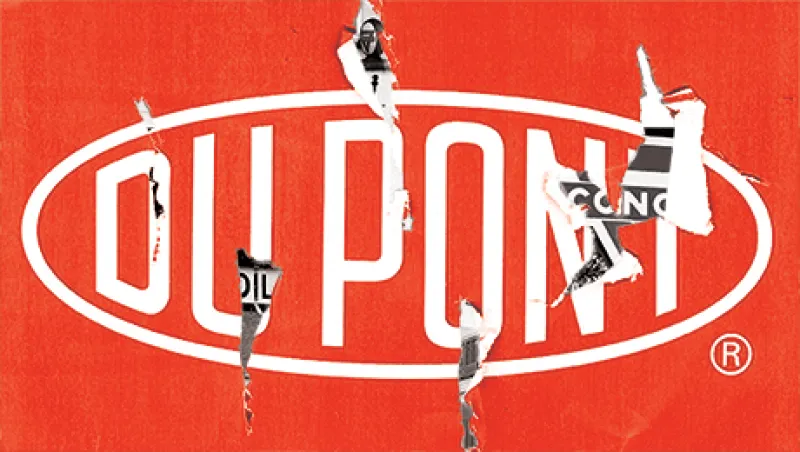E.I. du Pont de Nemours was hardly the sort of corporation, and Edward Jefferson was hardly the kind of chief executive, one would expect to find in one of the messiest takeover brawls in U.S. history. DuPont is the oldest major corporation in America, founded in 1802 to manufacture gunpowder along Brandywine Creek outside Wilmington, Delaware. The family-owned and -managed company had, through war and peace, crisis and prosperity, become one of America’s preeminent R&D-driven companies. In 1902 Pierre du Pont and his two cousins, all MIT-trained, had acquired the then–munitions maker from family members, undertook acquisitions and transformed management with innovative techniques and investments in science-based product development. In 1914, Pierre acquired a stake in then-foundering General Motors, joined its board, became its president and DuPont eventually took control. DuPont also designed, built and operated the Hanford works in Washington State that produced plutonium for atomic weaponry. Its munitions business, however, was increasingly troublesome, profitable but hazardous and controversial.
The ’70s had been hard on DuPont. Raw material costs, notably oil, spiked, and competition, mostly in textiles, mounted. The stock sank. The government had awakened to environmental degradation and hit chemical makers. DuPont’s old nemesis, antitrust, loomed. In 1971 the last du Pont CEO and chairman, Lammot (Mots) du Pont Copeland, retired. After a two-year interregnum by a family retainer, the board — dominated by the family — handed the reins over to a lawyer named Irving Shapiro, the son of a Jewish Lithuanian immigrant tailor and dry cleaner, and a graduate of the University of Minnesota Law School, who had made his name, and won the family’s trust, during DuPont’s antitrust struggle over GM and the forced sale of the stake in 1962. Shapiro made cuts to the all-but-sacrosanct research budget and took the first steps to reduce dependence on textiles. He retired in 1981, at 64, and accepted a partnership with an aggressive New York law firm, Skadden, Arps, Slate, Meagher & Flom, run by a corporate attorney named Joe Flom, and opened an office in Wilmington, where the nation’s preeminent state corporate-law courts operated.
Jefferson, 59, succeeded Shapiro. The lanky Jefferson was not a du Pont, although his ascension returned DuPont to the tradition of placing a technical man in charge. Jefferson was British, raised in London. His father had been a director of Hawker Siddely, which made fighter planes, and he served in the Royal Artillery during the war. DuPont recruited him after he won a first-class degree in chemistry at King’s College, University of London. Eventually, he ran all of DuPont’s Central Research, one of the summits of industrial science. When he was named Shapiro’s successor in May 1981, he was already talking about the need for DuPont to move in a radical new direction from maturing chemicals to youthful life sciences. Jefferson recognized the potential of what he called “living polymers,” as if proteins were plastics.
And yet for all the talk of life sciences, Jefferson made a move weeks after assuming leadership that drove DuPont in a radically different direction. On June 7, he announced an offer for Conoco, America’s ninth-largest corporation. Oil producer Conoco provided a solution to DuPont’s thirst for oil — a need that looked back to the crises of the ’70s, not forward to life sciences. The plan emerged from DuPont’s strategic planning bureaucracy, and decisively shaped Jefferson’s tenure. It also represented, at $7.57 billion in cash and stock, the largest M&A transaction yet.
Jefferson may not have fully comprehended the maelstrom he was entering. DuPont proudly believed its achievements insulated it from a rapidly changing corporate world, though the ’70s had breached some outer walls. Shapiro, a lawyer, a Jew, an outsider for all his years of loyal service, had sensed the magnitude of change. Takeover battles, like the one for Conoco, featured unrestrained financial forces, legalism gone mad, a profound market relativism and an ethos of victory at all costs. Corporations were losing control over their destinies; CEOs were potentates dragged into a democratic marketplace. Attitudes toward shareholders, workers, customers and pay were now under vise-like pressures. Outsiders were re-imagining the very governance of the corporation — the legal and ethical code that structured its mechanisms of control and participation.
DuPont had bid for Conoco as a so-called white knight, which fit its self-image. Despite its size, Conoco was under siege by Seagram, the New York–based liquor giant run by the scion of the founding Bronfman family, Edgar Bronfman Sr., who had sold some oil and gas properties and chose not to reinvest the money into booze. He wanted Conoco, and he went hostile when he was rebuffed. He wasn’t alone. Canadian oil producer Dome Petroleum craved Conoco’s stake in another Canadian oil company, Hudson’s Bay Oil & Gas, and stalked it. Conoco, in turn, had engaged in talks with another U.S. oil company, Cities Service, which was under attack by a third Canadian company, NuWest Group. And there was talk of other bidders, including Mobil Oil.
In making the decision to bid for Conoco, Jefferson and DuPont found themselves mired in the surreal counter-reality of a takeover struggle. The company was engaged not only in a multiparty bidding contest that escalated rapidly, but was besieged by Wall Street advisers who spoke a violent, opaque language of struggle, coercion and control. They played M&A as if it were a bloodsport. The two lawyers who had all but invented modern takeovers, Wachtell Lipton Rosen & Katz’s Martin Lipton and Skadden’s Flom, appeared on the scene: Lipton counseling Conoco, Flom DuPont. DuPont also hired its traditional adviser, Morgan Stanley, whose M&A advisery unit was run by Robert Greenhill, and First Boston, whose team was headed by Joseph Perella and his larger-than-life partner, the already notorious savant of takeover tactics, Bruce Wasserstein. The deal quickly got so complicated that Perella and Wasserstein dubbed it the double-barreled two-step or, more colloquially, Big Rube, like a Rube Goldberg mechanism.
After a summer of struggle, DuPont emerged victorious — on a technicality: With Cities Service and Seagram tapped out, the last rival bidder, Mobil, got snarled in a government request for antitrust data and had to delay its bid. (Mobil bid $120 a share, well over DuPont’s $98.) That left DuPont, which convinced enough shareholders to tender — that is to sell their shares to the company rather than risk waiting for Mobil to get clear. Seagram won a consolation prize: Its Conoco stake translated into 24.3 percent of DuPont once the deal closed. Bronfman became DuPont’s largest shareholder, surpassing du Pont family interests, and Seagram took two seats on the board. All this posed challenges to Jefferson. The oil crisis was over, but a recession had begun, and DuPont bought Conoco just as markets were recognizing the presence of an oil glut, not a shortage. Meanwhile, the move into life sciences was constrained by the need to pay down debt and by the time and attention required to integrate Conoco.
Jefferson did form a joint venture with drugmaker Merck & Co., but while the effort generated some products, life sciences demanded reserves of patience, capital and technical skills that tested DuPont. The market demanded results. Jefferson already sounded defensive in the New York Times in 1984: DuPont’s “long experience in launching not just new products but new ventures and new areas” has given it “a grasp of the things that lead to success.” He retired four years later. A decade later, Merck sold its stake back to DuPont. Around that time, DuPont spun off Conoco; Wall Street had been calling for that move for years. Three years later DuPont unloaded the pharma venture to Bristol-Myers Squibb. By then the Bronfmans were long gone.
Takeovers, as DuPont discovered, represented enormous risk, experiments that unfolded unpredictably. Even the common rationale for takeovers, shareholders getting a premium, was problematic. Takeovers are among the most disruptive activities a corporation can engage in. But takeovers had not been a major feature of corporate life since the ’20s. Companies were bought and sold but until conglomerates emerged in the late ’60s, M&A activity had been desultory, hostile deals rare and large companies impregnable. Conglomerates were experiments in portfolio diversification applied to the corporation, and were first celebrated, then condemned as failures.
Many viewed the takeover wave that began in the mid-’70s as unprecedented, sinister, a sign of disordered times. By later measures, the volume and number of deals were tiny, but the hostility was novel. The hostile takeover undermined the prevailing corporate order. Managers and boards resisted the notion that just anyone, a raider or another large company, could simply demand that you surrender your business without a fight. Who were these people? They were strangers, outsiders, who did not understand (or care) how their companies worked or their responsibilities. These interlopers did not see how deeply the corporation was tied into the real economy. Acquisitions were expensive and risky. Takeovers led to layoffs, broken contracts, shuttered factories, dislocated lives.
Under the zero-sum pressure of a takeover attack, judgment quickly became poisoned by self-interest. These managers, went the charge, did not care about anyone but themselves. The age of hostile takeovers can be seen as one long sermon on the stain of self-interest, of amour propre, in the governance of corporations. Stakes were high. Doubt was contagious. The duties of fiduciaries were open to question. Raising self-interest, or conflict, or agency costs, about managers led to similar suspicions of shareholders, workers, bankers, lawyers, the media, politicians — nearly everyone in the game.
These charges, often formulated as shareholders versus managers, were brought to life by new ideas that attacked the self-image of corporations as patriarchal and organic entities that conducted their affairs through reciprocal relationships, which were interwoven with the national fabric: the stakeholder model. The turmoil of the ’60s, the crises of the ’70s, the rise of institutional investors, the deregulation of Wall Street and globalization effectively undermined the stakeholder model, and in its place arose a new way of looking at corporations and their governance. This involved a more abstract and narrow version of governance. Companies may appear impressively tangible, but that was an illusion. Companies could be deconstructed. Most relationships could be redefined as legal contracts, thus allowing stakeholders to be erased from the governance equation. Only one relationship mattered: the company’s relationship with its shareholders, which boards and managers had the responsibility to serve. This set of ideas swept away long-held stakeholder views.
Many believed in 2008 that the modern era of M&A had ended with the financial crisis. Banks were not lending, markets were stunned, and the corporate triad of managers, boards and shareholders, hit by credit crises, illiquidity, panic and recession, rejected M&A. Instead, boards, often urged on by activists, took their free cash flow and bought back their own shares, often borrowing to take advantage of low interest rates. Companies insisted there was no better use of corporate cash — not spending for expansion, modernization, R&D or even acquisition — that was safer or more rewarding than buying back your own stock. True, the rank and file had to sacrifice. Wages were frozen; budgets were cut; layoffs were necessary. Buybacks contributed little to future growth. But they are a logical extension of the shareholder model.
And then, in 2014, just as many capitulated to the conventional wisdom of M&A’s demise, takeovers began ticking up again. By 2015 new records were being set and cyclical processes were turning like a watch mechanism on a time bomb: rising prices, larger premiums, greater size, a heightening of euphoria, with share prices dancing on each announcement.
As for governance, there are more activists and buybacks, institutional shareholders can now farm out monitoring of companies to proxy advisers, and the hostility of the ’80s has not reappeared. M&A had been routinized. M&A innovation, in fact, appears exhausted, as if all the permutations have been run. The dominant reflex of governance continued to be, despite recent disasters, to align interests of top managers, boards and shareholders: a narrowing oligarchy. For all the surveys, consultants, studies, conferences and think tanks, governance is as rudimentary as squaring a board: align the interests.
But corporate governance sits uneasily within a larger politics. Regular episodes of public outrage against Wall Street, finance, executives or corporations threaten to engulf corporations, or at least encrust them with new rules, which regulators cannot police and companies can never fully comply with. Arguably, it’s the worst of both worlds, inefficient and risky. Today we live with a governance and M&A regime resembling the early ’60s: seemingly inevitable, but not underpinned by deep and coherent belief. Regulatory oversight is derided; Congress is feared, but not respected; voters are viewed as dangerously ignorant. Key concepts like efficient markets or rational expectations, and the tendency to define success and efficiency in available, if straitjacket, terms — to a stock price on a given day — have been battered, and little has emerged to take their place.
As for DuPont, the company bought and sold, strategized and restructured after Conoco, still proud of its past and its stakeholder instincts. Investors, however, grew agitated. Under CEO Ellen Kullman, DuPont still talked about transformation fueled by seeds and agricultural chemicals. But in May 2015 Kullman found herself in a proxy battle with activist Nelson Peltz. She won — barely. And by October she announced her retirement. The denouement came quickly. In December Dow Chemical and DuPont announced $130 billion merger, followed by cost cutting and layoffs and the eventual breakup of DowDuPont into three tax-free spin-offs.
In these final days for DuPont, the Conoco deal still hangs as a what-if. What if Jefferson had never acquired Conoco and focused on the life sciences? Might DuPont have swept past its former second-tier chemical rival, Monsanto, which has aggressively remade itself into an agricultural biotech powerhouse? The reality of the what-if counterfactual, and a defining aspect of M&A, is that we will never know. •
This article is adapted from Bloodsport: When Ruthless Dealmakers, Shrewd Ideologues, and Brawling Lawyers Toppled the Corporate Establishment. Reprinted with permission from PublicAffairs. All rights reserved.






